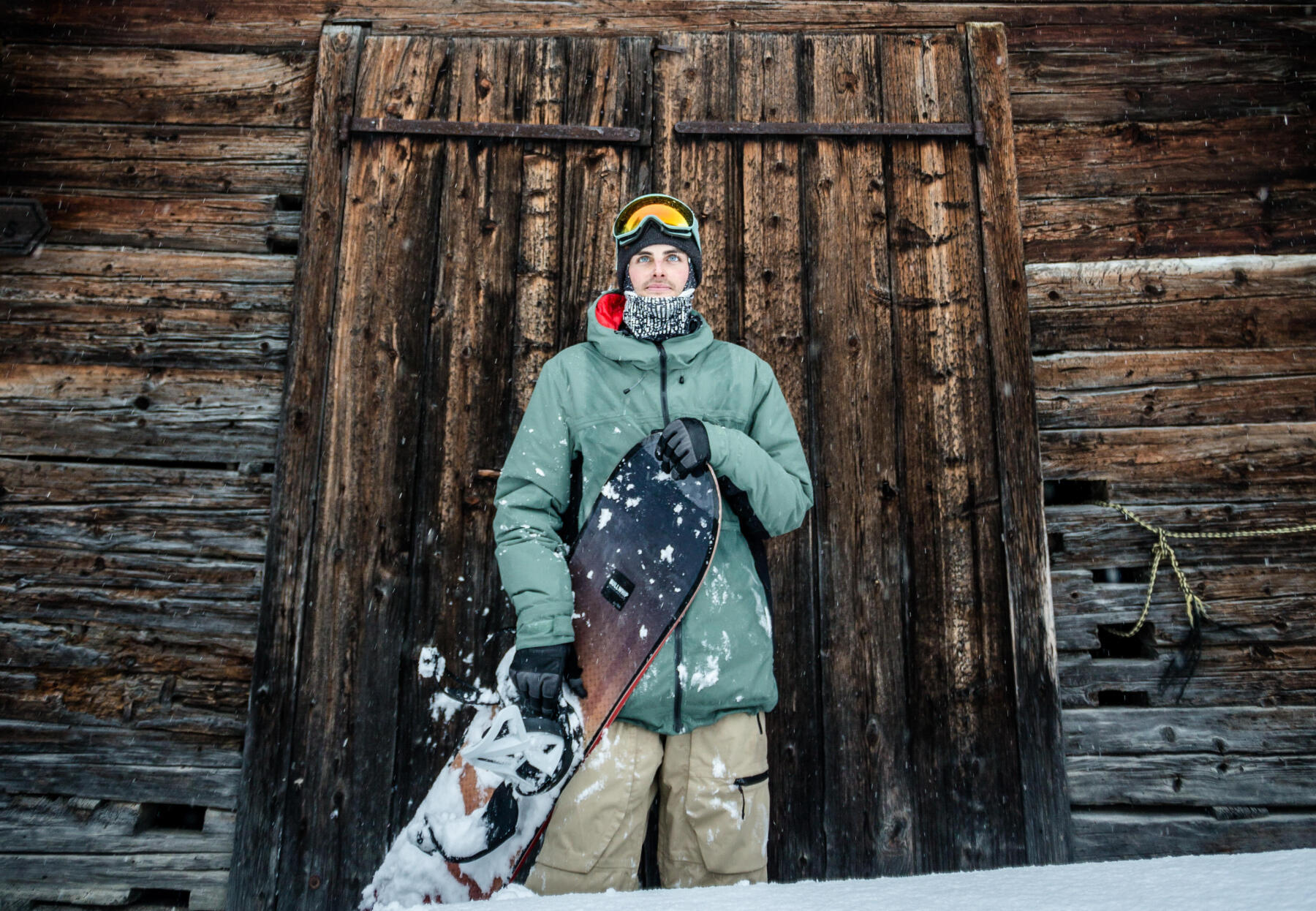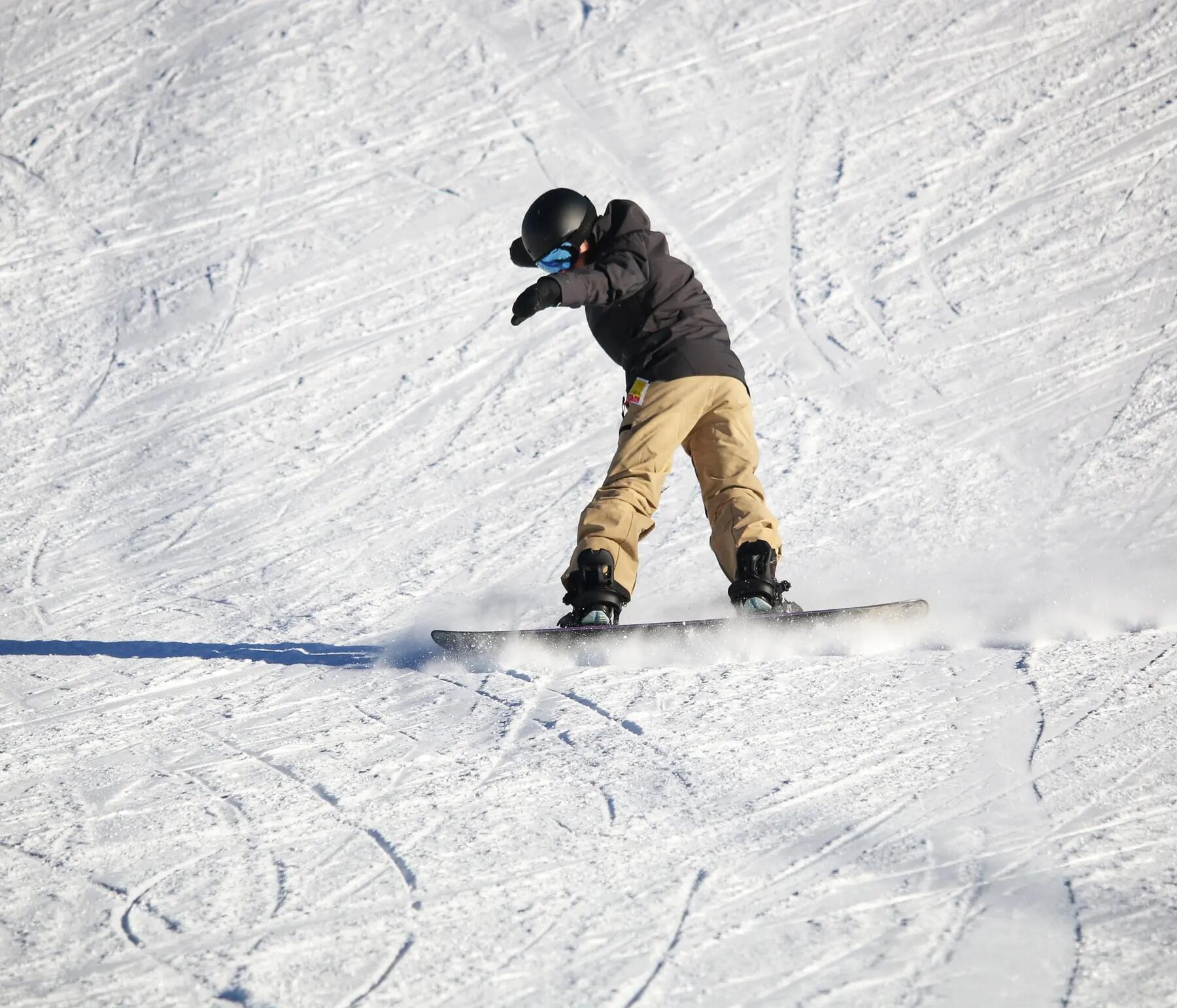1. Types of snowboards
Whether you're cruising the slopes, dashing through backcountry trails or landing a backside 360 in the park, knowing your riding style will help you select the right snowboard.

Not sure which snowboard to choose? Look no further! We are here to help you find the snowboard best suited for your needs.

Whether you're cruising the slopes, dashing through backcountry trails or landing a backside 360 in the park, knowing your riding style will help you select the right snowboard.
All-mountain
The name says it all. All-mountain boards are made to explore different facets of snowboarding. Groomed slopes, powder snow, and backcountry trails can all be experienced with this board. They offer more buoyancy in powder snow and their directional shape offers better grip and control over your trajectory. Get ready for a new adventure each time you go snowboarding.
Freestyle
Shorter than all-mountain boards, these twin-tip boards (the front and back are 100% symmetrical) make it easier to ride in both directions and stay balanced when making turns. If you don't really have a need for speed and would prefer having fun in the park landing tricks and riding rails, then this board is for you.
Freeride
As directional boards with a fishtail design, these are meant to be ridden with one tip facing downhill. The board's flex is also stiffer than a freestyle snowboard. Freeride boards are for the adventurous type who likes to explore natural, ungroomed terrain.
Splitboard
Made for backcountry riders, this board essentially splits into two ski-shaped boards to facilitate ascents with climbing skins. Once at the mountain top, the two halves re-attach into a snowboard for an intrepid descent in deep powder snow.
Length
The basic criteria to choose a snowboard size will vary depending on the rider's weight, height and riding style. The rule of thumb is that the board should be about 20 cm shorter than your height. Then, adjust by considering other criteria like ability level and the board's weight. Shorter boards are easier for beginners to learn with. Keep in mind the learning curve is quite short and snowboarding is fairly easy to pick up. Shorter boards are particularly adapted to park terrain, half-pipes and rails. Longer boards offer more stability and speed and are best suited for freeriding.
Flexibility (flex)
The board's flex varies from soft to very stiff. A soft flex is good for beginners and park riders as it is easier to manoeuvre when turning, allowing for smoother moves, especially at low speed. Freeride and backcountry snowboarding demand a stiffer flex for a better edge grip and stability at high speeds and through sharp turns.
Shape
True twin, asymmetrical, directional, volume shifted, and directional twin are some of the board shapes on the market today. Twin-tip boards are best suited for all-mountain riders and beginners. If you want to learn how to ride switch, this board shape will make it much easier. Asymmetrical boards improve manoeuvrability and are also a good choice for beginners.
Rocker, camber, or flat refer to the board's profile. It influences the board's contact point with the snow. Many board shapes will actually use a combination of these technologies to offer optimal performance.
A rocker or reverse-camber snowboard is perfect for backcountry and deep powder snow. It offers superior float and increased manoeuvrability when turning, reducing the risks of catching an edge. Rocker boards are known to be a lot of fun!
A camber snowboard has a slight upward curve in the middle of the board with contact points towards each end. This board profile is best suited for groomed trails and hardened snow. While it requires a bit more expertise to handle, it offers precision, power and increased edge hold.
A flat board remains in contact with the snow in between the tips. It is the easiest profile for executing transitions smoothly. It has a superior edge grip than a rocker profile and greater manoeuvrability than camber.
Summary: A few options are available to first-time snowboarders, depending on your riding style and snowboarding goals. A twin-tip or asymmetrical all-mountain board, with a rocker or a combination of rocker/camber profile and a soft to medium flex, is a good starting point for beginners.

The materials used to construct a snowboard can have a significant impact on its performance. Snowboards are generally made with the following base materials: wood, plastic, metal and fibreglass. Each of these materials offers specific characteristics. For example, wood snowboards may offer a natural sense of flexibility while plastic snowboards are often lighter. Fibreglass is used to reinforce the boards rigidity and durability. It is important to consider the base material according to your style and personal preferences in the sport.

The flex, or flexibility, of a snowboard is a key element of its performance. It determines the board bends under the pressure of the snowboarder’s weight. Snowboards generally offer three types of flex: soft, mid and firm.
- Soft flex: Snowboards with soft flex have more give and are generally suited to beginner snowboarders. They are easier to maneuver and control, which makes them the ideal boards for learning the basics of the sport. Also, they absorb irregularities in the terrain, which makes them even more comfortable to use.
- Mid flex: Boards with mid flex are very versatile and suitable for most types of snowboarding. They offer good balance between stability and handling, which makes them a great choice for intermediate or advanced snowboarders who want to try different techniques.
- Firm flex: Snowboards with firm flex are designed for experienced snowboarders who are aiming for high level performance. They offer a lot of stability at high speeds and excellent response to tight curves. However, a certain level of expertise is required to use them correctly.
The choice of flex will depend on your level, your snowboarding style and the conditions of the mountain where you will be snowboarding. When you have a board with the right type of flex for your level and your needs, you will be able to really enjoy your time on the snow and progress in this sport.

Snowboarding is easy to learn and no matter which board you choose, you will have a blast on the slopes!